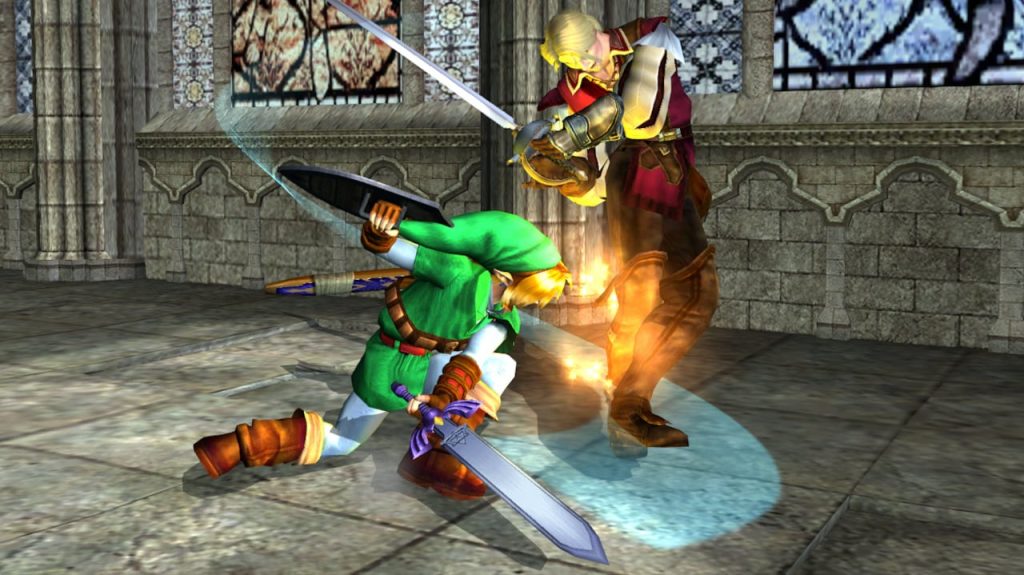The excitement among gaming enthusiasts escalates as Nintendo prepares to unveil its latest console, the Nintendo Switch 2. With a treasure trove of nostalgic titles, GameCube classics such as Soulcalibur II are set to re-emerge for a new generation of players. Originally released in 2002, this game has secured its place as a high point in fighting game history. As it makes its way to modern platforms, we revisit what makes Soulcalibur II a timeless masterpiece and why it continues to resonate with players today.
The Evolution of Fighting Games
Fighting games have evolved significantly since the genre’s inception, but Soulcalibur II remains a standout due to its unique integration of weapon-based combat within a 3D arena. Released as the sequel to the critically acclaimed Soulcalibur, the game combined the fluidity of movement celebrated in earlier fighting games with a range of weapons that offered players varied combat styles.
Back in 1999, when the original Soulcalibur debuted on the Dreamcast, the idea of adding weaponry to fights was innovative. It set the stage for what would become a hallmark of the series. More than just a gimmick, these weapons were intricately woven into the gameplay mechanics, allowing for diverse strategies, combos, and fighting styles.
A Robust Roster and Engaging Combat Mechanics
The lineup of characters in Soulcalibur II is a significant factor in its long-standing appeal. Iconic fighters like Mitsurugi, Yoshimitsu, Ivy, and Taki bring their distinct weapon styles and moves, contributing to gameplay that feels both nostalgic and fresh. The introduction of Link as a platform-exclusive character fostered excitement among fans, despite his gameplay feeling somewhat different from the others. His inclusion was designed to appeal to Nintendo purists, paralleling Sony’s inclusion of Heihachi Mishima and Microsoft’s Spawn as guest characters.
Moreover, Soulcalibur II’s combat mechanics are designed for accessibility. The game offers a learning curve that is friendly to newcomers while still providing depth for seasoned players. Leveraging a 2.5D fighting plane, players can sidestep attacks and take advantage of positional strategies that are still appreciated in modern fighting games. According to a retrospective on the genre by Gamasutra, games like Soulcalibur II helped redefine what a fighting game could be, ensuring that weapon-based combat did not come at the cost of accessibility.
Graphics and Presentation: A Lasting Impression
Even decades after its initial release, Soulcalibur II’s graphics continue to impress. The game’s visual design is characterized by beautifully rendered characters and stages, each filled with vibrant colors and dynamic animations. The presentation evokes a sense of grandeur, featuring dramatic entrances and over-the-top finishing moves that have become synonymous with the franchise.
While discussing the impact of graphical fidelity on gameplay experience, a study by Statista found that higher-quality visuals can significantly influence players’ purchase intentions. Soulcalibur II’s engaging style has kept it relevant as both a competitive game and a nostalgic experience for players who grew up with the series.
Rich Game Modes and Replayability
The game shines not only in its combat mechanics and character roster but also in its varied game modes. From the classic arcade mode to more challenging survival and time attack modes, players have multiple ways to engage with the game. The standout, however, is the Weapons Master mode, where players traverse a map, battling foes to acquire new weapons and gear. This feature adds a layer of depth and narrative, akin to RPG elements that are increasingly popular in modern gaming.
Moreover, the inclusion of mission-based challenges and character progression equips players with a reason to grind through matches, enhancing the longevity of the game. Research from IGDB shows that games with robust single-player modes substantially increase player engagement and retention, underlining why players continue to flock to Soulcalibur II.
Community Response and Legacy
The community’s response to Soulcalibur II has remained overwhelmingly positive over the years. Celebrated in forums and social media platforms, players hail it as one of the best fighting games to grace consoles. Popular Twitch streamers and YouTube content creators have also featured the game, showcasing its lasting appeal. The anticipation surrounding its upcoming release on the Nintendo Switch 2 has reignited discussions about its legacy, making it a trending topic in gaming circles once again.
As the fighting game genre continues to evolve with new titles entering the fray, Soulcalibur II stands as a testament to the potential for depth and enjoyment within the genre. The game’s intelligent combat mechanics, beautiful presentation, and immersive gameplay ensure that it will remain a classic, cherished both by longtime fans and newcomers alike.
Quick Reference Table
| Feature | Description |
|---|---|
| Release Year | 2002 |
| Platforms | GameCube, PS2, Xbox (Nintendo Switch 2 upcoming) |
| Character Roster | Mitsurugi, Yoshimitsu, Ivy, Taki, Link (exclusive) |
| Game Modes | Arcade, Time Attack, Survival, Weapons Master |
| Combat Style | 2.5D with weapon-based mechanics |
| Graphics | Impressive visuals for the time, vibrant stages |

